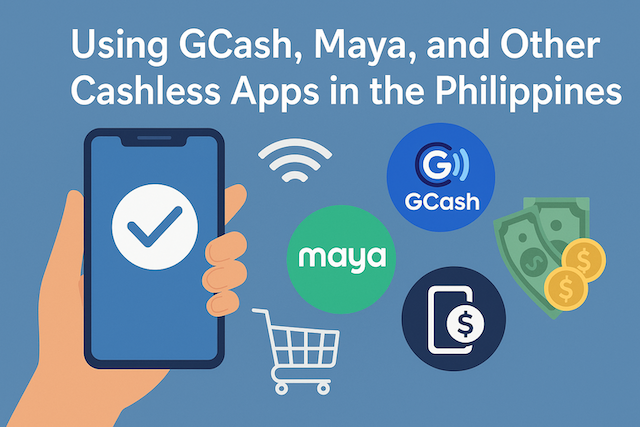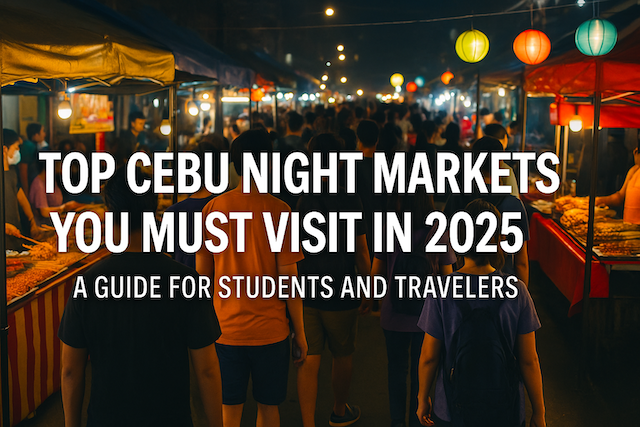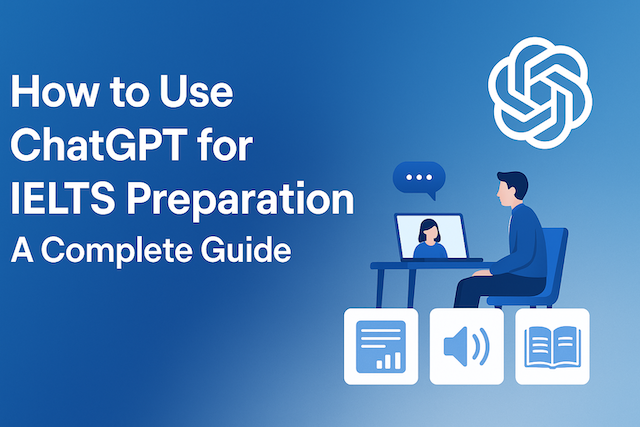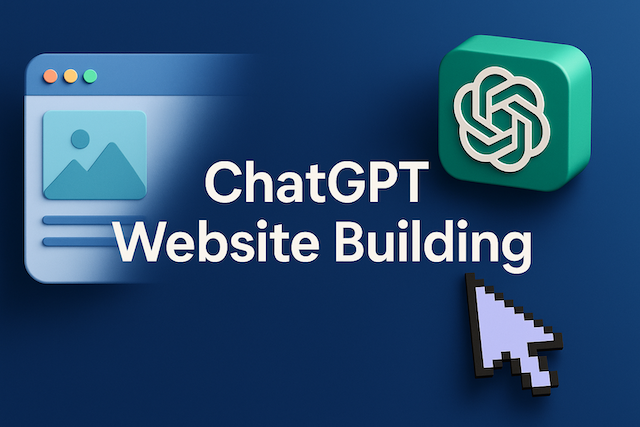Using GCash, Maya, and Other Cashless Apps in the Philippines

Contents
- Using GCash, Maya, and Other Cashless Apps in the Philippines
- Why Go Cashless in the Philippines?
- 1. GCash: The Market Leader
- 2. Maya: GCash’s Leading Competitor
- 3. GrabPay
- 4. ShopeePay and LazPayLater
- 5. Other Niche Cashless Platforms
- How to Cash In and Cash Out
- Accepted IDs for Verification (for Foreigners)
- Tips for Using Cashless Apps Safely
- Everyday Scenarios Where Cashless Apps Are Useful
- Can Foreigners Open Bank-Linked Wallets?
- What Happens If You Lose Your Phone?
- Promos and Rewards
- The Future of Cashless in the Philippines
- Final Thoughts
- Frequently Asked Questions
- Can foreigners register for GCash or Maya in the Philippines?
- What IDs are accepted for verifying a GCash or Maya account?
- Is it safe to use cashless apps in the Philippines?
- How can I top up or cash in to my mobile wallet?
- What’s the difference between GCash and Maya?
- Can I withdraw cash from my GCash or Maya account?
- Do these apps work without a Philippine SIM card?
- Are there transaction limits for foreign users?
- What bills can I pay using GCash or Maya?
- Can I link my GCash or Maya to a foreign bank account?
- Can I use my cashless wallet to shop in physical stores?
- What happens if I lose my phone?
- Can I use multiple wallets like GCash, Maya, and GrabPay simultaneously?
- Is it possible to send money from the Philippines to another country using these apps?
- Are there any fees for using these cashless apps?
Using GCash, Maya, and Other Cashless Apps in the Philippines
Your Guide to Navigating the Country’s Digital Payment Landscape
In recent years, the Philippines has rapidly embraced digital finance, with mobile wallets and cashless apps becoming essential tools for everyday transactions. Whether you’re paying bills, shopping online, sending money, or splitting a restaurant tab, cashless apps like GCash, Maya, GrabPay, and ShopeePay have revolutionized how Filipinos — and expats — manage their money.
For foreigners living, working, or staying long-term in the Philippines, understanding and using these apps can make life far more convenient. In this guide, we’ll explore the top cashless apps in the country, how to set them up, what features they offer, and practical tips to make the most of your digital wallet experience.
Why Go Cashless in the Philippines?
While cash remains a common mode of payment in many rural areas, urban centers like Manila, Cebu, and Davao are rapidly moving toward a digital-first payment ecosystem. The COVID-19 pandemic accelerated this trend, and now even small vendors and street food stalls often accept GCash or Maya.
Benefits of going cashless:
-
Convenience: Pay bills, send money, and shop without leaving your house.
-
Speed: Skip lines at banks and payment centers.
-
Security: Reduce the risk of carrying physical cash.
-
Promos and Cashback: Apps often offer discounts, points, or rewards.
-
QR Code Payments: Widely accepted in malls, cafes, taxis, and pharmacies.
1. GCash: The Market Leader
GCash is the most widely used mobile wallet in the Philippines, with over 90 million registered users as of 2025. Operated by Mynt (a partnership between Globe Telecom, Ayala Corp, and Ant Group), GCash offers an extensive range of services beyond just mobile payments.
Key Features:
-
Send Money to other GCash users or bank accounts
-
Pay Bills for utilities, internet, government, and more
-
Buy Load for prepaid SIMs
-
GSave: Digital savings account with CIMB Bank
-
GInvest: Invest in mutual funds and UITFs
-
GLife: Shop and book services directly inside the app
-
GCredit: A credit line based on your usage score
-
Scan to Pay via QR at 1 million+ locations
How to Register:
-
Download the app (available on Android/iOS)
-
Register with a Philippine mobile number
-
Upload a valid ID (e.g., passport, ACR I-Card, or driver’s license)
-
Complete facial recognition for verification
For Foreigners:
You’ll need a local SIM card and a valid ID accepted by GCash. An Alien Certificate of Registration (ACR I-Card) is often required. Without it, your account may be limited in functionality.
2. Maya: GCash’s Leading Competitor
Formerly known as PayMaya, Maya has rebranded into a full-fledged digital bank and wallet. Backed by Voyager Innovations and the PLDT Group, Maya combines banking and payments into one sleek platform.
Key Features:
-
Digital Savings Account with up to 10% interest p.a. (promo-based)
-
Instant Debit Card (virtual and physical)
-
Crypto Trading: Buy/sell Bitcoin, Ethereum, and more
-
Maya Credit: Access up to PHP 15,000 as a credit line
-
Pay Bills, Send Money, and QR Payments
-
Personalized Usernames for transfers (e.g., @john.doe)
Registration Steps:
-
Download the Maya app
-
Register with a mobile number
-
Upload ID and complete eKYC
-
Link to a bank or cash-in through kiosks
For Expats:
Maya also requires a valid government-issued ID. If you don’t have a Filipino ID, accepted documents may include passports and ACR I-Cards. Maya is often more flexible than GCash with ID verification, but it’s still recommended to complete the full verification to unlock features like crypto, interest earnings, and higher transfer limits.
3. GrabPay
Grab, Southeast Asia’s leading ride-hailing and delivery app, also offers GrabPay, a digital wallet embedded into the Grab ecosystem.
What You Can Do:
-
Pay for Grab rides, GrabFood, GrabMart, and other services
-
Use GrabPay in partner restaurants and stores
-
Earn and redeem GrabRewards points
-
Link with GCash or Maya for top-ups
While GrabPay is not as versatile as GCash or Maya in terms of bill payments or investment tools, it’s incredibly convenient for daily transportation and food delivery.
4. ShopeePay and LazPayLater
If you frequently shop online, you’ve likely used ShopeePay (Shopee’s digital wallet) or LazPayLater (from Lazada). These apps allow you to:
-
Load your wallet for seamless checkout
-
Access free shipping vouchers and cashback promos
-
Use “Buy Now, Pay Later” for eligible purchases
-
Pay via QR in participating offline partner stores
ShopeePay is ideal for promo hunters and shoppers, but it lacks broader financial tools like savings or transfers.
5. Other Niche Cashless Platforms
In addition to the big players, several smaller apps are gaining ground:
-
Coins.ph – A digital wallet + crypto exchange + remittance tool, with easy mobile load and bill payment features. It’s especially popular with freelancers and overseas workers.
-
JuanCash – Focused on financial literacy and micro-loans.
-
PalawanPay – Operated by Palawan Pawnshop; widely used in rural areas for cash pickups, remittance, and bills payment.
How to Cash In and Cash Out
Cash In Methods:
-
Over-the-counter (7-Eleven, Palawan Pawnshop, SM, Cebuana Lhuillier)
-
Online bank transfer via Instapay or PESONet
-
Credit or debit card (with fees)
-
PayPal (in some wallets like GCash or Payoneer to Maya)
Cash Out Options:
-
ATM withdrawal via linked debit card (GCash/Maya)
-
Over-the-counter outlets
-
Bank transfers
-
Delivery via remittance partners (e.g., GCash to Palawan, Maya to Cebuana)
Accepted IDs for Verification (for Foreigners)
| App | Passport | ACR I-Card | Driver’s License | Others |
|---|---|---|---|---|
| GCash | ✅ | ✅ (Preferred) | ✅ (if local) | SSS, UMID (local) |
| Maya | ✅ | ✅ | ✅ | PhilSys ID |
| GrabPay | ✅ | ❌ (limited) | ✅ (if local) | – |
Always check the latest list on the app’s official site or support page, as ID policies can change.
Tips for Using Cashless Apps Safely
-
Use strong passwords and enable biometrics
-
Avoid using public Wi-Fi for financial transactions
-
Activate transaction alerts via SMS or push notification
-
Double-check recipient details before sending money
-
Don’t share OTPs or PINs with anyone — even if they claim to be support staff
Everyday Scenarios Where Cashless Apps Are Useful
Grocery Shopping
Scan-to-pay is available at major supermarkets like SM, Robinsons, and even local wet markets that accept QR codes.
Bills Payment
No more lining up at payment centers — use GCash or Maya to pay for electricity, water, and internet with a few taps.
Food Delivery
Order via GrabFood or Foodpanda and pay directly through GrabPay or Maya for instant checkout and promo deals.
Transportation
Use GrabPay for rides around Cebu or Metro Manila, or scan QR codes in partner taxis and jeepneys (in pilot areas).
Sending Allowance
Easily send funds to helpers, tutors, or family members. You can even set up recurring transfers.
Can Foreigners Open Bank-Linked Wallets?
Yes — if you have a valid ACR I-Card and Philippine mobile number, you can link your GCash or Maya account to select local banks like BPI, UnionBank, and CIMB. This enables seamless transfers, cash-ins, and automated savings.
However, opening a bank account as a foreigner may require:
-
ACR I-Card
-
Proof of billing
-
Employment contract or school certificate
-
Minimum deposit
GCash’s GSave and Maya’s savings feature offer a digital-first alternative with higher interest rates and fewer requirements.
What Happens If You Lose Your Phone?
If your phone is stolen or lost:
-
Immediately report to your wallet provider via their hotline or email.
-
Lock your SIM card with your mobile carrier.
-
Request device unlinking and reset from the app’s web portal or customer support.
-
Reinstall the app on a new device once your number is reactivated.
Apps like GCash and Maya allow recovery using your registered mobile number, PIN, and security questions.
Promos and Rewards
Most apps offer aggressive promotions for new users:
-
Free ₱50 or ₱100 credits upon signing up
-
Cashback for bill payments
-
Points systems (e.g., GrabRewards, Shopee Coins)
-
Referral bonuses for inviting friends
Check the “Promos” section within the app for updated deals, especially during holidays and shopping festivals.
The Future of Cashless in the Philippines
With the BSP’s (Bangko Sentral ng Pilipinas) goal to make 70% of transactions digital by 2026, cashless adoption will only grow. Unified QR codes (QRPh), digital banking licenses, and fintech innovation are making payments faster, safer, and more inclusive.
Expect to see:
-
Wider offline merchant acceptance
-
Interoperability between wallets
-
AI-driven finance tools
-
Digital credit scoring for unbanked users
Final Thoughts
Whether you’re a Filipino or a foreigner residing in the Philippines, using cashless apps like GCash, Maya, and GrabPay can greatly enhance your convenience and safety. From grocery runs to crypto investing, these tools are reshaping how money moves in the archipelago.
Choose the right app based on your lifestyle — GCash for everyday payments, Maya for digital banking and crypto, GrabPay for rides and food, and ShopeePay for online deals. And remember: your mobile wallet is only as secure as your habits. Stay informed, stay safe, and enjoy going cashless in the Philippines.
Frequently Asked Questions
Can foreigners register for GCash or Maya in the Philippines?
Yes, foreigners can register for both GCash and Maya, provided they have a valid Philippine mobile number and an accepted ID. Most commonly accepted documents include a passport and an ACR I-Card (Alien Certificate of Registration). Full access to wallet features such as sending money, cashing out, or applying for financial products usually requires full KYC (Know Your Customer) verification.
What IDs are accepted for verifying a GCash or Maya account?
GCash and Maya both accept a range of government-issued IDs. For foreigners, the most reliable options are a passport and an ACR I-Card. Some users may also be able to verify their identity using a local driver’s license if obtained legally. GCash is slightly stricter with ID requirements compared to Maya, which is sometimes more flexible depending on the registration wave or campaign.
Is it safe to use cashless apps in the Philippines?
Yes, major apps like GCash, Maya, and GrabPay follow strict security protocols, including two-factor authentication, biometric login, PIN protection, and encrypted data transfer. However, users should still be vigilant: never share your OTP (one-time password), use strong passwords, and avoid using public Wi-Fi when transacting online.
How can I top up or cash in to my mobile wallet?
You can cash in to GCash, Maya, and other wallets through several methods: over-the-counter at 7-Eleven, Palawan Pawnshop, SM Bills Payment Centers, and Cebuana Lhuillier; through linked bank accounts (via InstaPay or PESONet); or via credit/debit card. Some wallets also allow linking with PayPal or international bank accounts, though features may be limited for foreigners.
What’s the difference between GCash and Maya?
GCash is more focused on payments, savings, bills, and credit lines. Maya combines a full digital banking experience with features like a virtual debit card, high-interest savings, crypto trading, and credit. GCash has a larger merchant base for QR payments, while Maya tends to offer better interest rates for deposits and more flexibility for new users.
Can I withdraw cash from my GCash or Maya account?
Yes. Both apps allow cash-out via ATMs if you request a physical card (GCash Mastercard or Maya card). You can also withdraw through partner outlets such as Palawan Pawnshop, Cebuana Lhuillier, and local banks using bank transfers. Cash-out fees may apply depending on the method.
Do these apps work without a Philippine SIM card?
Unfortunately, most cashless apps in the Philippines are tied to a local mobile number. A Philippine SIM is required for account registration, OTPs, and customer verification. Without one, registration is not possible. You can purchase prepaid SIMs locally with your passport, and load them to maintain service for the app.
Are there transaction limits for foreign users?
Yes. GCash and Maya have wallet tiers (Basic, Fully Verified, and Upgraded). New or partially verified users have daily and monthly transaction limits. Once fully verified with a passport and ACR I-Card, limits typically rise to PHP 100,000 or more per month. Additional documents may be required to unlock business features or high-value transfers.
What bills can I pay using GCash or Maya?
You can pay for a wide variety of bills, including electricity (VECO, Meralco), water utilities, internet providers (PLDT, Globe, Sky), insurance, government contributions (SSS, Pag-IBIG), tuition fees, and even housing loans. Some merchants charge a small convenience fee, while others are free.
Can I link my GCash or Maya to a foreign bank account?
No, currently foreign bank accounts cannot be linked directly to GCash or Maya. You must use a local Philippine bank or top-up via over-the-counter methods. If you have a multi-currency service like Wise or Payoneer, you may be able to transfer indirectly via linked Philippine accounts.
Can I use my cashless wallet to shop in physical stores?
Yes. Many stores, especially in major cities like Cebu and Manila, accept QR code payments from GCash, Maya, or GrabPay. Just scan the merchant’s QR code displayed at the cashier and input the amount. This feature is available in supermarkets, restaurants, pharmacies, convenience stores, and even some taxis.
What happens if I lose my phone?
If your phone is lost or stolen, immediately report the issue to the customer service hotline or email of your wallet provider. You should also suspend or block your SIM card through your mobile network. Once you recover your number, reinstall the app, log in again, and reset your PIN. Most apps will not allow money transfers without your personal verification steps.
Can I use multiple wallets like GCash, Maya, and GrabPay simultaneously?
Yes, you can install and use multiple cashless apps on the same device as long as each one is registered with a valid mobile number. Many Filipinos and expats use both GCash and Maya to access different features, promos, or merchant networks. Just remember to secure each wallet with a unique PIN or password.
Is it possible to send money from the Philippines to another country using these apps?
As of 2025, GCash and Maya primarily support domestic transactions. While Coins.ph supports some international remittances, cross-border money transfer functionality is limited. For sending money abroad, it’s better to use services like Wise, Western Union, or traditional bank wire transfers.
Are there any fees for using these cashless apps?
Most basic services like bill payment, QR payments, and app-to-app transfers are free. However, bank transfers via InstaPay, over-the-counter cash-ins, and ATM withdrawals often incur fees. GCash and Maya also sometimes charge convenience fees for certain services, so check your app’s fee table regularly.




